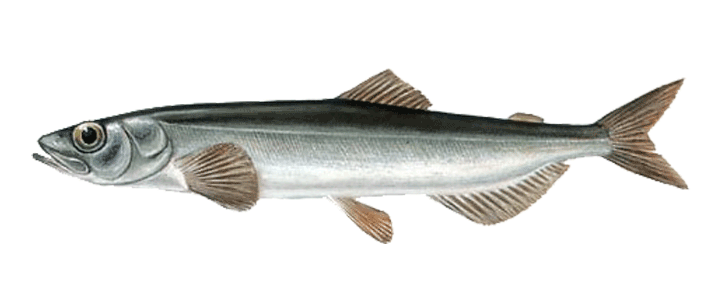A small sea fish capelin

A small sea fish, capelin or caplin, which is of great commercial importance; in addition, capelin is a food source for many other commercial fish. Let's take a closer look at what kind of fish capelin is.
Content
- What kind of fish is capelin
- What capelin looks like
- Where does capelin live?
- What does capelin eat?
- How capelin spawn
- Economic importance of capelin
What kind of fish is capelin
Capelin fish (Latin name Mallotus villosus) is a marine fish of the smelt family (Osmeridae).
What capelin looks like
The body length of capelin is up to 25 cm, weight up to 52 g, maximum life expectancy is 10 years. Capelin has very small scales and small teeth. The capelin's back is olive-greenish, its sides and belly are silvery. Male capelin are distinguished by the presence of a strip of scales on their sides, each of which has a semblance of lint.
Where does capelin live?
Capelin is distributed almost circumpolarly, in the Arctic and northern parts of the Atlantic and Pacific oceans. Capelin is found in the North Atlantic - the Barents Sea to about. Bear, Norwegian Sea to Spitsbergen, Greenland coast (up to 74° N) and from Hudson Bay to the Gulf of Maine (USA); in the North Pacific Ocean - to Korea and about. Vancouver (Canada).
What does capelin eat?
Capelin is a schooling pelagic fish; Capelin feeds on planktonic crustaceans, making serious competition for herring and juvenile salmon.
How capelin spawn
Capelin is a purely marine fish; capelin lives in the open sea, in the upper layers of water (up to 300 m, less often 700 m). Capelin approach the shores only during the spawning period, sometimes even entering river estuaries.
Before breeding, capelin gather in huge schools, which begin to approach the shores. In different parts of its range, capelin spawn at different times, from spring to autumn. Schools of capelin going to spawn are followed by schools of cod, seagulls, seals and even whales. In strong winds, waves throw spawning capelin onto the shore.
Capelin spawning grounds are located on sandy soils, on shallows and banks almost from the water's edge. Fertility 1.5-60 thousand eggs; capelin caviar is bottom, sticking. Capelin eggs are light yellow, 0.5-1.2 mm in diameter. Hatching of capelin larvae occurs after 55 days at a water temperature of 0°C and after 8 days at 12°C; the current carries them out to the open sea. The spawned capelin return to the open sea. Capelin spawns usually 1, rarely 2 times in life; A lot of capelin die after spawning. Capelin matures in 2-3 years; males are a year later than females.
Economic importance of capelin
Capelin is a commercial fish. Capelin reserves are quite large, and in some years over 4 million tons were mined. In 2005–2009, capelin catches ranged from 269 to 750 thousand tons[4]. In 2012, global capelin catches exceeded 1 million tons. The largest sizes of capelin in commercial catches are 11–19 cm, age 1–3 years.